Elementary Integration
Important Questions on Elementary Integration
A particle starts moving at along -axis from , with an initial velocity . The acceleration of the particle is linearly increasing as shown by its acceleration-time graph. Find the change in velocity of the particle during the time interval to . Also, find the final velocity of the particle at the time .
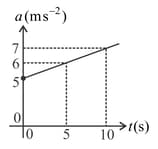
The speed of a car increases uniformly from zero to in , and then remains constant.
Find the distance travelled by car in the first two seconds.
Find the distance travelled by car in the next two seconds.
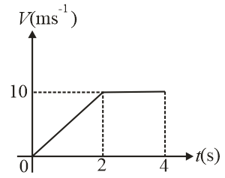
A particle moves with constant acceleration along a straight line moves with an initial velocity of , then obtain an expression for its instantaneous velocity. If the particle occupies a position at then obtain an expression for the instantaneous displacement of the particle.
A particle moves with constant acceleration along a straight line. If it moves with an initial velocity of , then obtain an expression for its instantaneous velocity.
Let the instantaneous velocity of a rocket, just after launching, be given by the expression (where is in and is in ). Find out the distance travelled by the rocket from to .
Sita is driving along a straight highway in her car. At a time , when Sita is moving at in the positive -direction, she passes a signpost at . Here, acceleration is a function of time
Derive expressions for her velocity and position as functions of time.
At what time is her velocity greatest?
What is the maximum velocity?
Where is the car when it reaches the maximum velocity?
Calculate the area enclosed under the curve between the limits and .
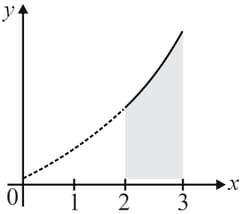
Evaluate
Evaluate
Solve the integral .
Solve the integral .
Solve,
Integrate the following with respect to .
Integrate
Integrate with respect to ,
The acceleration of a particle varies with time seconds according to the relation . Find velocity and position as functions of time. It is given that the particle starts from origin at with velocity .
The acceleration of a motorcycle is given by , where and . The motorcycle is at rest at the origin at time .
(a) Find its position and velocity as functions of time.
(b) Calculate the maximum velocity it attains.
A stationary particle of mass is acted upon by variable force. The variation of force with respect to displacement is plotted in the figure below.
(a) Calculate the velocity acquired by the particle after getting displaced through .
(b) What is the maximum speed attained by the particle and at what time is it attained?
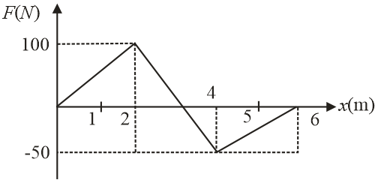
A car accelerates from rest with for and then decelerates constantly with for second to come to rest. The graph for the motion is shown in figure.
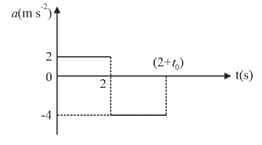
(a) Find the maximum speed attained by the car.
(b) Find the value of .
The speed of a car increases uniformly from zero to in and then remains constant (figure).
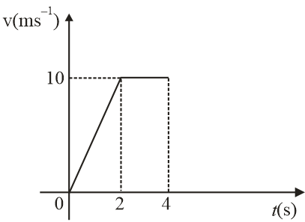
(a) Find the distance travelled by the car in the first .
(b) Find the distance travelled by the car in the next .
(c) Find the total distance travelled in .

